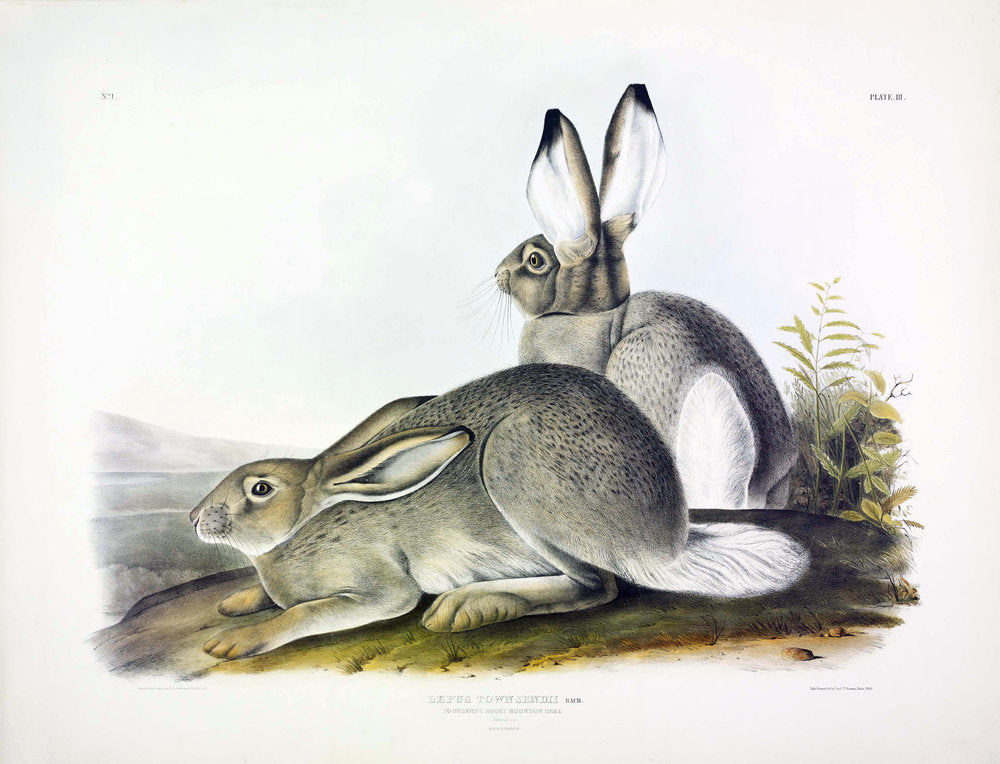from: Engravings & Lithographs
John James Audubon (1785-1851). Townsend's Rocky Mountain Hare, Plate 3. The Viviparous Quadrupeds of North America.
John James Audubon (1785-1851). Townsend's Rocky Mountain Hare, Plate 3. The Viviparous Quadrupeds of North America.
Couldn't load pickup availability
Painted by John James Audubon (1785-1851) with background likely by Victor Gifford Audubon (1809-1860)
Townsend's Rocky Mountain Hare, Plate 3.
Lithographed by J. T. Bowen &. Co.
Lithograph with hand color, paper dimensions: approximately 22 x 28 inches
From Vol. I, Part 1 of John James Audubon and John Bachman’s (1790-1875) The Viviparous Quadrupeds of North America.
New York: V.G. Audubon, 1845-1848.
Please contact us for price. Our intention is to offer the highest quality selections at the lowest cost.
The following passage is included in the accompanying description of Lepus Townsendii, Bach. Townsend's Rocky Mountain Hare.
“We first saw it on the plains of the Blackfoot river, east of the mountains, and observed it in all similar situations during our route to the Columbia. When first seen, which was in July, it was lean and unsavory, having, like our common species, the larva of an insect imbedded in its neck; but when we arrived at Walla-Walla, in September, we found the Indians and the persons attached to the fort using it as a common article of food. Immediately after we arrived we were regaled with a dish of hares, and I thought I had never eaten anything more delicious. They are found in great numbers on the plains covered with wild wormwood, (Artemesia.) They are so exceedingly fleet that no ordinary dog can catch them. I have frequently surprised them in their forms and shot them as they leaped away, but I found it necessary to be very expeditious and to pull trigger at a particular instant, or the game was off among the wormwood and I never saw it again. The Indians kill them with arrows by approaching them stealthily as they lie concealed under the bushes, and in winter take them with nets. To do this, some one or two hundred Indians, men women and children, collect, and enclose a large space with a slight net about five feet wide, made of hemp; the net is kept in a vertical position by pointed sticks attached to it and driven into the ground. These sticks are placed about five or six feet apart, and at each one an Indian is stationed with a short club in his hand, After these arrangements are completed a large number of Indians enter the circle and beat the bushes in every direction. The frightened hares dart off towards the net, and in attempting to pass are knocked on the head and secured.”


